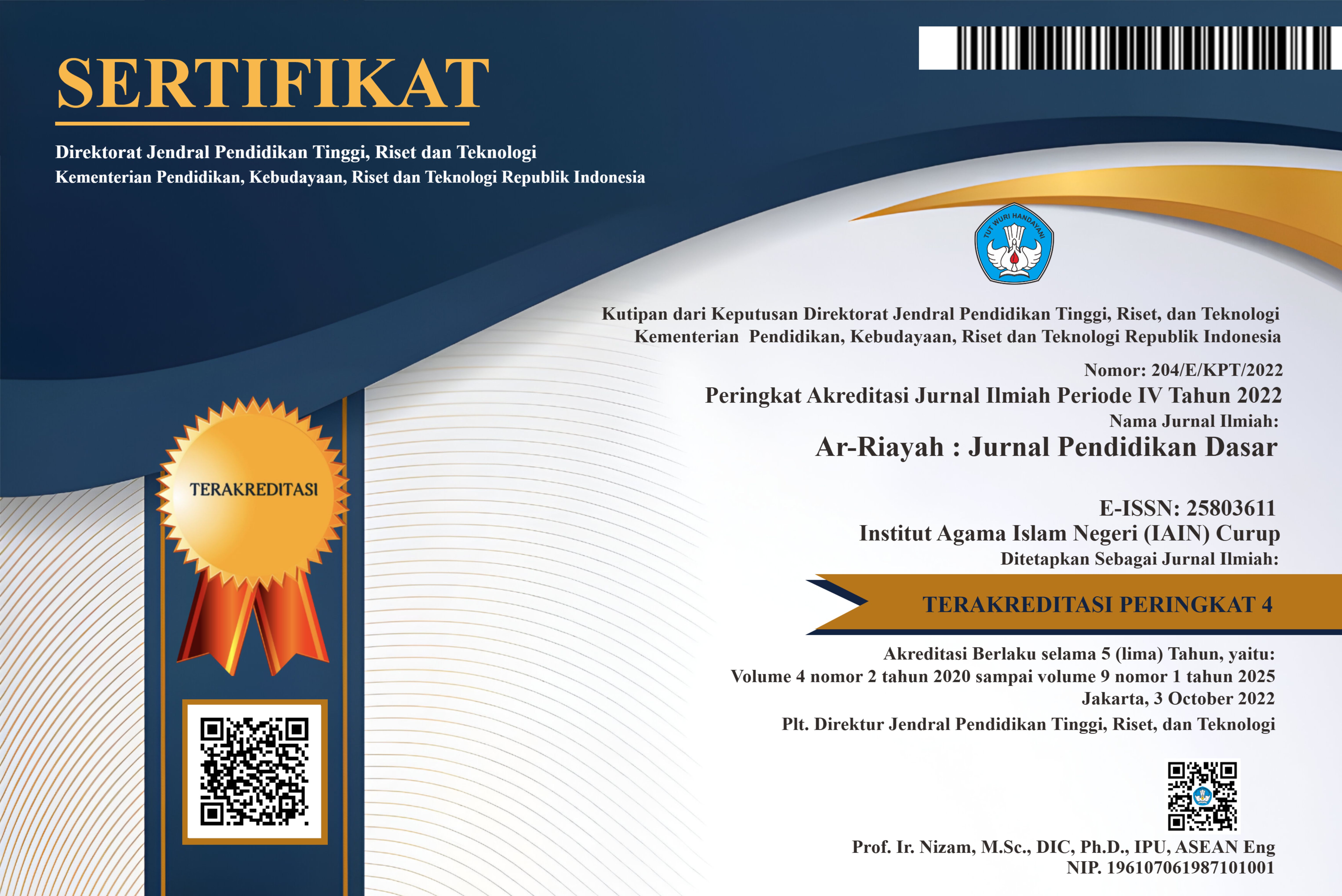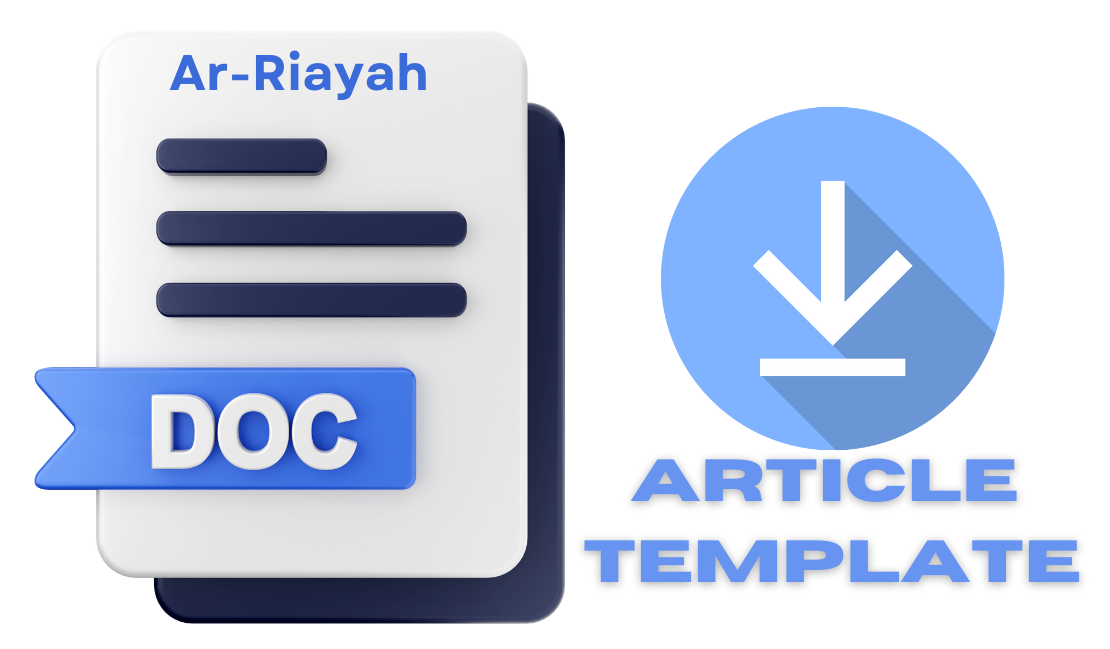Pengembangan Modul Pembelajaran Praktikum Berbasis Literasi Sains pada Materi Sifat Benda dan Perubahannya di Kelas V MI Babul Ulum Kanten
DOI:
https://doi.org/10.29240/jpd.v7i2.8338Keywords:
Scientific Literacy, Practicum Learning Module, Properties of Things and Their Changes.Abstract
One of the reasons for the low scientific literacy abilities of students in Indonesia is the use of learning media that does not contain elements of scientific literacy. Learning carried out directly using practical learning modules can improve students' scientific literacy skills. This research aims to explain the development process and results of developing practical learning modules based on scientific literacy. The research and development method used by researchers is Research and Development using the ADDIE model which includes the Analyze, Design, Development, Implementation and Evaluation stages developed by Robert Maribe Branch. The instruments used in this research and development are observation sheets, interview sheets, media, material and language expert validation questionnaires, student response questionnaires and tests. The results of research and development of practical learning modules based on scientific literacy obtained an average validation score from media, material and language experts of 88%, media experts 92%, material experts 85% and language experts 87%. The small scale student response questionnaire got 82% results, and the large scale student response questionnaire got 91% results from 18 students. The result of calculating the N-Gain score is 0.879, which shows that the practical learning module based on scientific literacy is very effectively applied in learning.
Downloads
References
Anas Sujiono. Pengantar Evaluasi Pendidikan. Edited by PT Grafindo Persada. Yogyakarta, 2013.
Asyhari, A. “Profil Peningkatan Literasi Sains Siswa Melalui Pembelajaran Saintifik.†Jurnal Ilmiah Pendidikan Fisika Al Birruni 4, no. 5 (2015): 179–91.
Desi Ariana, Risya Pramana Situmorang, Agna Sulis Krave. “Pengembangan Modul Berbasis Discovery Learning Pada Materi Jaringan Tumbuhan Untuk Meningkatkan Kemampuan Literasi Sains Siswa Kelas XI IPA SMA.†Jurnal Matematika Dan IPA 11 (1) (2020).
Dian Eka Safitri. “Pengembangan Modul Pembelajaran IPA Berbasis Etnosains Pada Materi Gerak Untuk Meningkatkan Literasi Sains Pada Siswa Kelas IV SD.,†2022.
Dwi Jayanthi. “, Pengembangan Multimedia InteraktifBerbasisi Inkuiri Terbimbing Untuk Meningkatkan Kemampuan Literasi Sains Dan Self Efficacy Siswa Pada Materi Sistem Pencernaan,†2018, 2.
Fuadi, Husnul, Annisa Zikri Robbia, Jamaluddin Jamaluddin, and Abdul Wahab Jufri. “Analisis Faktor Penyebab Rendahnya Kemampuan Literasi Sains Peserta Didik.†Jurnal Ilmiah Profesi Pendidikan 5, no. 2 (2020): 108–16. https://doi.org/10.29303/jipp.v5i2.122.
Furqan, H., Y. Yusrizal, and S. Saminan. “Pengembangan Modul Praktikum Berbasis Inkuiri Untuk Meningkatkan Keterampilan Proses Sains Dan Hasil Belajar Siswa Kelas X Di Sma Negeri 1 Bukit Bener Meriah.†Jurnal Pendidikan Sains Indonesia (Indonesian Journal of Science Education) 4, no. 2 (2016): 124–29.
Imansari, Nurulita, and Ina Sunaryantiningsih. “Pengaruh Penggunaan E-Modul Interaktif Terhadap Hasil Belajar Mahasiswa Pada Materi Kesehatan Dan Keselamatan Kerja.†VOLT : Jurnal Ilmiah Pendidikan Teknik Elektro 2, no. 1 (2017): 11. https://doi.org/10.30870/volt.v2i1.1478.
Lusiana, Wuwuk. “Pengembangan Bahan Ajar Berbasis Praktikum Materi Sifat Benda Dan Perubahannya Untuk Meningkatkan Pemahaman Konsep Siswa Kelas III Di MI Sunan Giri Malang,†2014.
Marlina. Pengembangan Media Pembelajaran SD/MI. Aceh: Muhammad Zaini, 2021.
Rahmawati, Ilham. “Pengembangan Lembar Kerja Peserta Didik (LKPD) IPA Untuk Mengajarkan Keterampilan Literasi Sains SIswa Kelas V Di SDIT Ya Bunayya Pujon,†2020, 42.
Rusilowati A. Kurniawati L, Nugroho, SE. “Developing an Instrument of Scientific Literacy Asessment on the Cycle Theme.†International Journal of Environmental and Science Education 11, no. 12 (2016): 18–27.
Saputro, Budiyono. Manajemen Penelitian Pengembangan (Research & Development) Bagi Penyusun Tesis Dan Disertasi. Journal of Chemical Information and Modeling. Vol. 53, 2017.
Siti Fatimah S, Sirate, Risky Ramadhana. “Pengembangan Modul Pembelajaran Berbasis Keterampilan Literasi.†Pengembangan Modul Pembelajaran Berbasis Keterampilan Literasi Volume VI (2017): 317.
Sugiyono. Metode Penelitian Kuantitatif Kualitatif Dan R & D. Bandung: Alfabeta, 2018.
Suhailisari Nasution, Nurbaiti, Arfannudin. Teks Laporan Hasil Observasi Untuk Tingkat SMP Kelas VII, 2021.
Wignyo. “Peningkatan Hasil Belajar IPA Dengan Metode Praktikum Materi Pokok Menunjukkan Perbedaan Sifat Benda (Padat, Cair, Gas) Siswa Kelas V SDN 021 Kunto Darussalam.†Jurnal Ilmiah Edu Research 8 (1) (2019): hal. 73.
Yulia, Nurul Mahruzah, Roikhatul Jannah, and Zumrotus Sa. “Pengembangan Media Pembelajaran Calculator Box Materi Penjumlahan Dan Pengurangan Kelas I MI Development of Learning Media Calculator Box Material for Addition and Subtraction Class I MI.†Journal of Elementary Educational Research 3, no. 1 (2023): 21–33.
Yusuf, A Muri. “M.†In Metode Penelitian Kuantitatif, Kualitatif, Dan Penelitian Gabungan, 372, n.d.
Downloads
Published
How to Cite
Issue
Section
Citation Check
License
Authors who publish with Ar-Riayah: Jurnal Pendidikan Dasar agree to the following terms:
Authors retain copyright and grant the journal right of first publication with the work simultaneously licensed under a Creative Commons Attribution-NonCommercial-ShareAlike 4.0 International License (CC BY-NC-SA 4.0) that allows others to share the work with an acknowledgment of the work's authorship and initial publication in this journal.
Authors are able to enter into separate, additional contractual arrangements for the non-exclusive distribution of the journal's published version of the work (e.g., post it to an institutional repository or publish it in a book), with an acknowledgment of its initial publication in this journal.
- Authors are permitted and encouraged to post their work online (e.g., in institutional repositories or on their website) prior to and during the submission process, as it can lead to productive exchanges, as well as earlier and greater citation of published work (See The Effect of Open Access).










